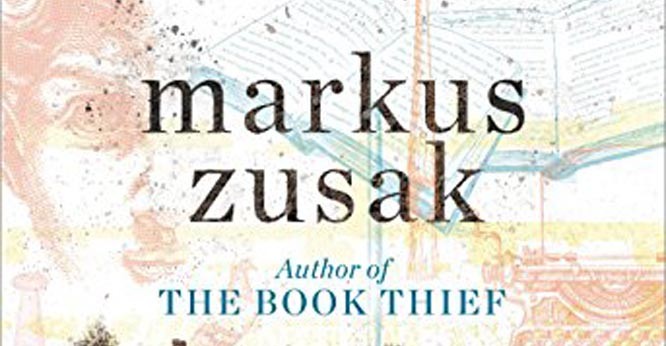
A radical departure from his magnum opus The Book Thief, Markus Zusak’s latest book offers a searing account of loss that is both bleak and disconcerting

Audacious in its ambition, Markus Zusak’s Bridge of Clay offers a searing account of loss that stands the risk of being both bleak and disconcerting. If structural and stylistic choices are anything to go by, this novel is a radical departure from the Australian writer’s magnum opus The Book Thief, which is a moving tale that sizzles with insights about the Nazi regime in Germany during the Second World War.
The author seems to have seamlessly shifted gears and looked in his own backyard for his latest offering. But it would be an overstatement to assume that Bridge of Clay can eclipse The Book Thief and emerge as Zusak’s new masterpiece.
A quick glance at the introductory blurb reveals that the novel focuses on the lives of the Dunbar boys - Matthew, Rory, Tommy, Clay and Henry. Abandoned by their father - Michael Dunbar, who is repeatedly referred to as the Murderer - and haunted by the memory of their deceased mother -- Penny Dunbar, the five brothers are left to their own devices. They inhabit their family home on Archer Street in a borough of Sydney where they "[swear] like bastards" and "[fight] like contenders". The chaotic rhythm of their lives compels people to conclude that they are "barbarians". But the Dunbar boys are accustomed to these comments and continue to thrive in the mayhem that has become synonymous with their lives.
The novel begins with the unceremonious return of their father who asks his sons to help him build a bridge. Unlike his brothers, Clay - who is reticent and sensitive - doesn’t rebuff his father’s peculiar request and agrees to assist him. Clay’s decision to accept the Murderer’s strange demand pulls him into a "careful, side-by-side partnership [with his father], maybe like two boxers in the opening rounds". Tormented by a web of secrecy and the weight of a past that threatens to paralyse him, Clay finds solace in constructing the bridge that will eventually salvage his family.
For a book that spans over 500 pages, the plot is deceptively straightforward and, at times, banal. As expected, Zusak’s writing is poetic, poignant and powerful. Michael Dunbar is referred to as "a wasteland in a suit" - an apt description for a much-diminished man who has experienced adversity. However, an elegant turn of phrase is often compromised by an unending spell of symbolism and metaphors that weakens the flow of the narrative. At times, the plot tends to slacken, which does a disservice for an exceedingly long book that tackles universal themes and sentiments.
Matthew Dunbar, the narrator of the novel, is avowedly known for "occasional sentimentality". This confession appears at the outset of the book and prepares readers for those rare moments when Bridge of Clay fails to offer an objective glimpse of reality. Without this disclosure, readers may not have a readymade excuse for the monotony that sets in when the narrator dwells on aspects of the story that are, at best, trivial.
Nevertheless, Zusak’s new novel ought to be praised for its remarkable ability to put each character’s intentions under scrutiny. While the emphasis remains on Clay’s journey towards redemption, a conscientious attempt is made to understand how Michael and Penny’s choices have contributed to their son’s emotional turmoil. This technique also enables readers to empathise with the father of the Dunbar brothers as it takes them through his childhood years and his failures as an adult. But most of the insights and observations that emerge from this distinct structural device aren’t weaved into the novel in a smooth and effective manner. On the contrary, the narrative seems to meander in all directions and is often far too tedious to get through.
The personal trajectories of the Dunbar parents could have been carefully sewn into the novel’s structure. Instead, their stories haphazardly emerge in the story, distracting readers with vivid details and plotlines that could fill an entire novel. However, a few discerning readers may find this to be a useful device in understanding Clay’s choices as Bridge of Clay rolls along and finally reaches its conclusion. Therefore, it would be best to persevere them until this moment of discovery.
Zusak’s The Book Thief is remembered for its accurate depiction of life in Nazi Germany. With that novel, the author could have been forgiven for doing little to construct the setting as the mere mention of the Second World War evokes distressing images of concentration camps in Germany, Adolf Hitler and aerial bombings. The problem with Bridge of Clay is that the author struggles to create the setting of the book, leaving some readers in a quandary and others with the gift of imagination.
Driven by the unbearable burden of loss and the power of redemption, Zusak’s new book dares to be different, even when it fails to impress.
Bridge of Clay
Author: Markus Zusak
Publisher: Penguin RandomHouse UK
Pages:582
Price:2,250/-